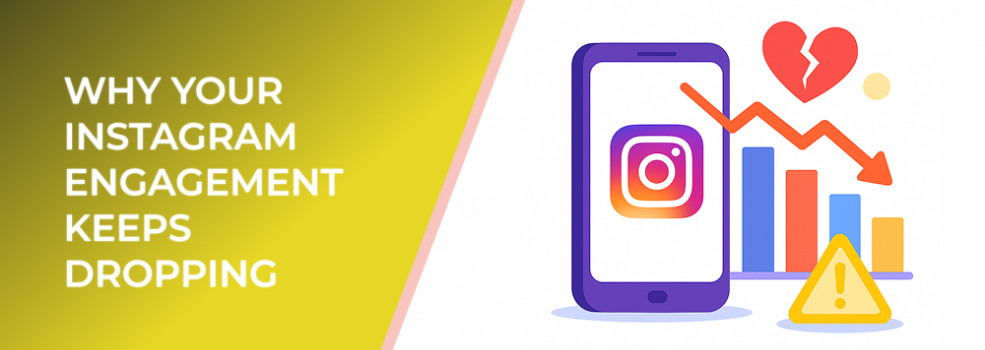If you’ve noticed fewer likes, comments, or shares on your Instagram posts lately, you’re not alone. Engagement rates across the platform have been slowly declining, leaving many creators and businesses wondering what changed. According to recent social media studies, the average engagement rate on Instagram dropped from 1.9% in 2022 to around 1.3% in 2024. But that doesn’t mean your content is doomed—it just means you need to adapt.
Let’s explore the main reasons why your Instagram engagement might be dropping and what you can do to fix it.
1. Instagram’s Algorithm Has Evolved
Instagram constantly tweaks its algorithm to prioritize more meaningful content. In 2025, it’s heavily favoring authentic interactions and original videos over repetitive or overly promotional posts. If your content looks like an ad or feels disconnected from your audience, the algorithm might push it down.
What to do: Focus on storytelling and conversations instead of self-promotion. Encourage engagement with simple calls to action—ask questions, use polls in Stories, and reply to comments quickly. You can also boost your targeting precision by reading Facebook Ad Targeting 101: How to Reach the Right Audience.
2. Reels Have Taken Over
Reels now dominate Instagram’s visibility. Over 60% of users say they spend most of their time watching Reels, not scrolling through static posts. If you’re still relying mainly on images, you’re missing a big opportunity.
What to do: Start creating short, authentic Reels that highlight behind-the-scenes moments or quick tips. Even simple clips can go viral if they feel natural and relatable. For more on optimizing ad formats, check out Meta Ad Campaign Objectives Explained: How to Choose the Right One.
3. Audience Fatigue and Overposting
Your followers might just be overwhelmed. Posting too often—or pushing similar content repeatedly—can lead to fatigue. When users stop interacting, the algorithm assumes your content is less valuable and shows it to fewer people.
What to do: Experiment with your posting schedule. Sometimes posting less often but with better timing and quality can revive your engagement. Mix up formats—Stories, carousels, Reels, and Lives—to keep your audience interested.
4. Decline in Hashtag Power
Hashtags used to be the key to discovery. But Instagram has quietly reduced their influence in favor of recommendations driven by user behavior. Hashtags still help, but relying on them alone won’t work anymore.
What to do: Focus more on content relevance and captions that naturally include keywords your audience searches for. You can also learn to define your audience more precisely with How to Define a Target Audience for Marketing: a Step-by-Step Guide.
5. Shifts in User Behavior
People use Instagram differently now. More users are consuming content passively—scrolling, watching, and moving on—without liking or commenting. The rise of AI-driven recommendations also means your audience may see less of your content unless it performs well early on.
What to do: Post at times when your audience is most active, engage immediately after publishing, and try interactive features like questions or quizzes to increase early engagement.
Final Thoughts
A drop in engagement isn’t always a bad sign—it often means it’s time to evolve your strategy. Focus on authentic storytelling, test new formats, and pay attention to what your audience genuinely responds to. Instagram is still one of the most powerful platforms for brand growth, but success now depends on adaptability and consistency.
Related Articles
-
How to Run Multi-Country Facebook Ad Campaigns Without Wasting Budget
-
Social Commerce vs E-Commerce: What’s the Difference and Why It Matters

